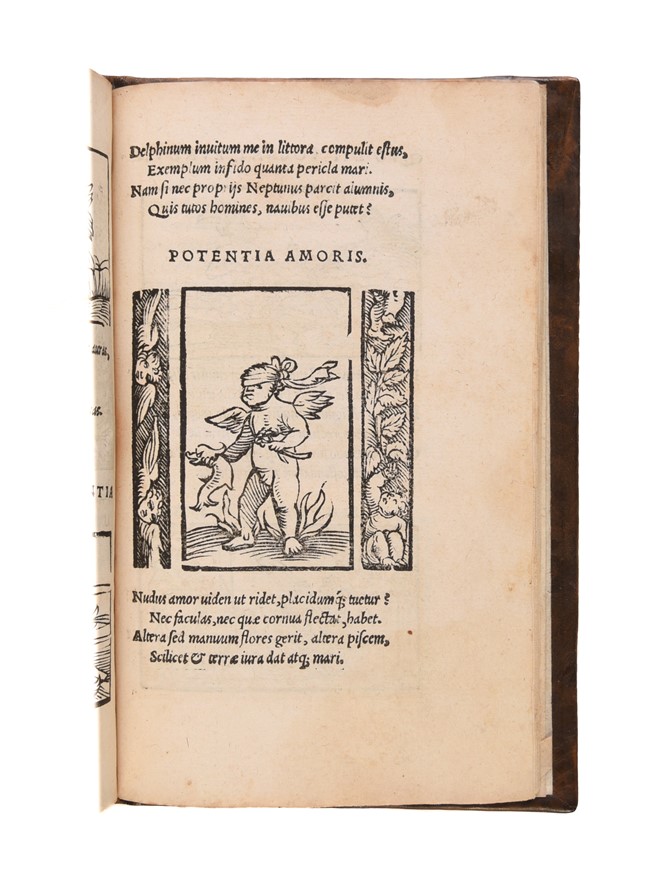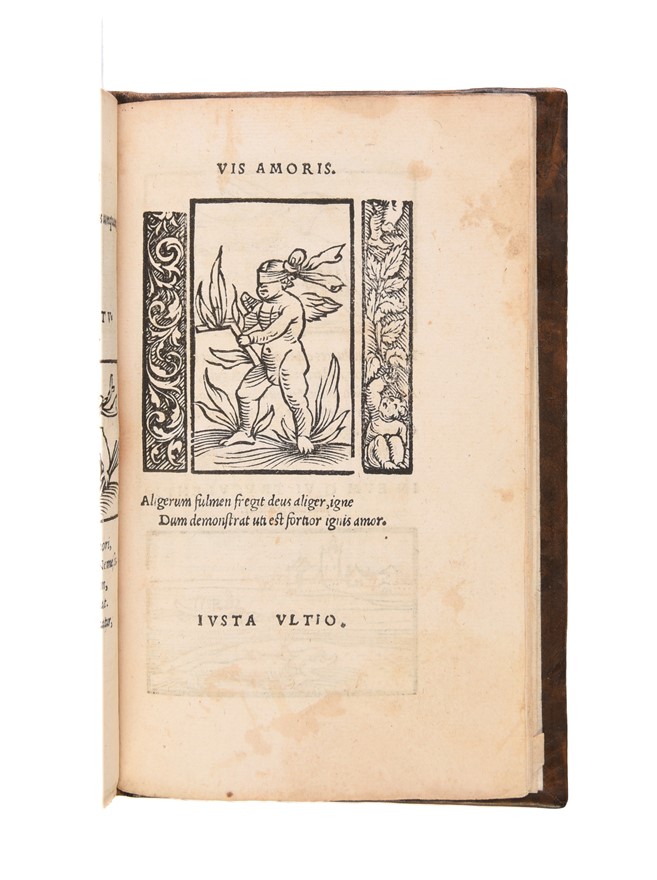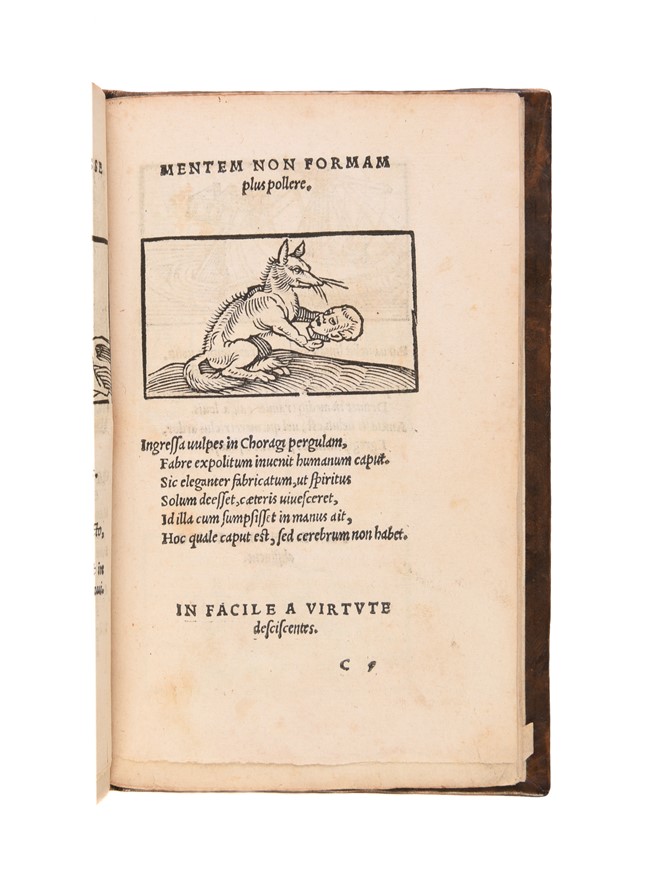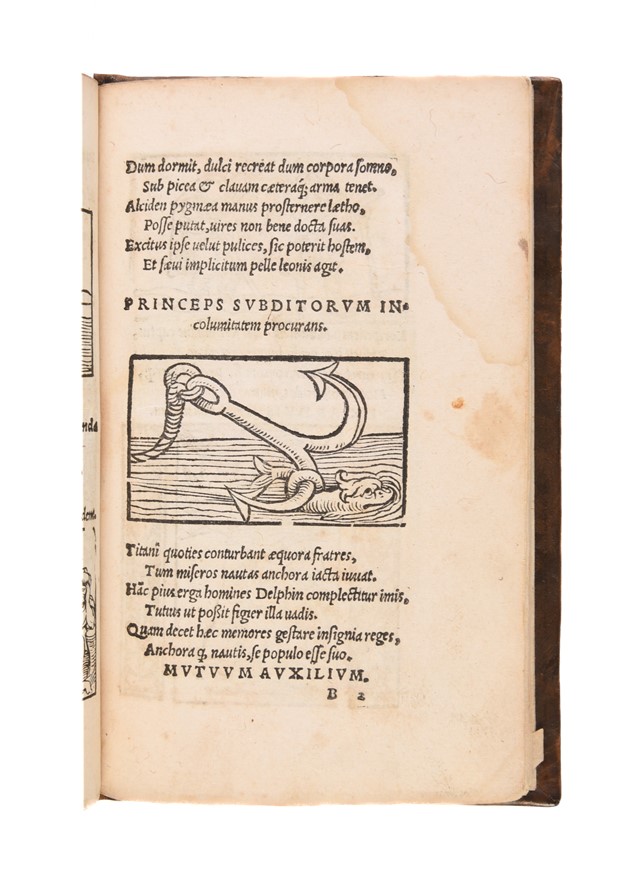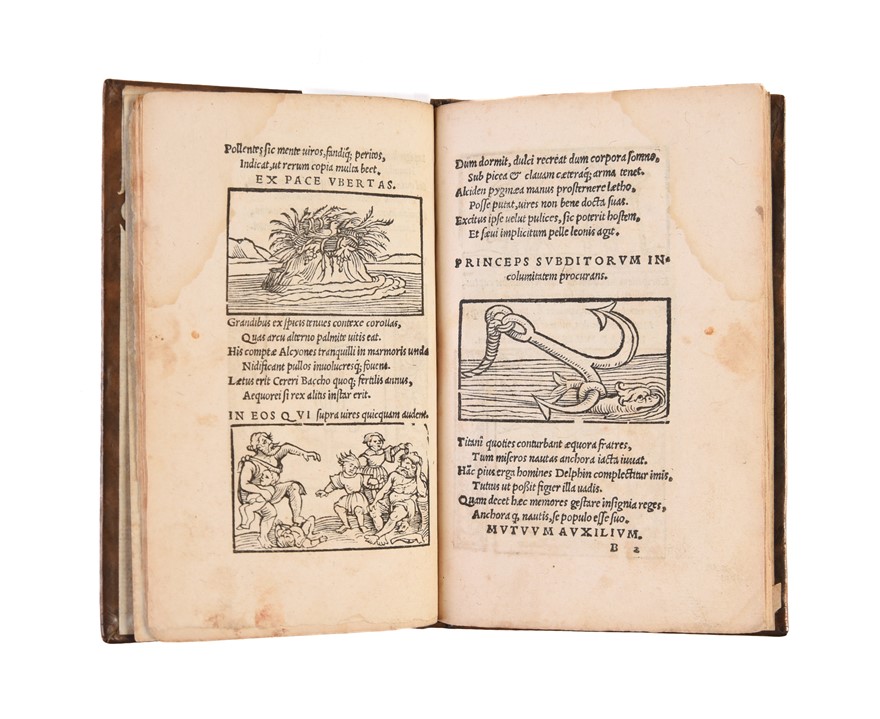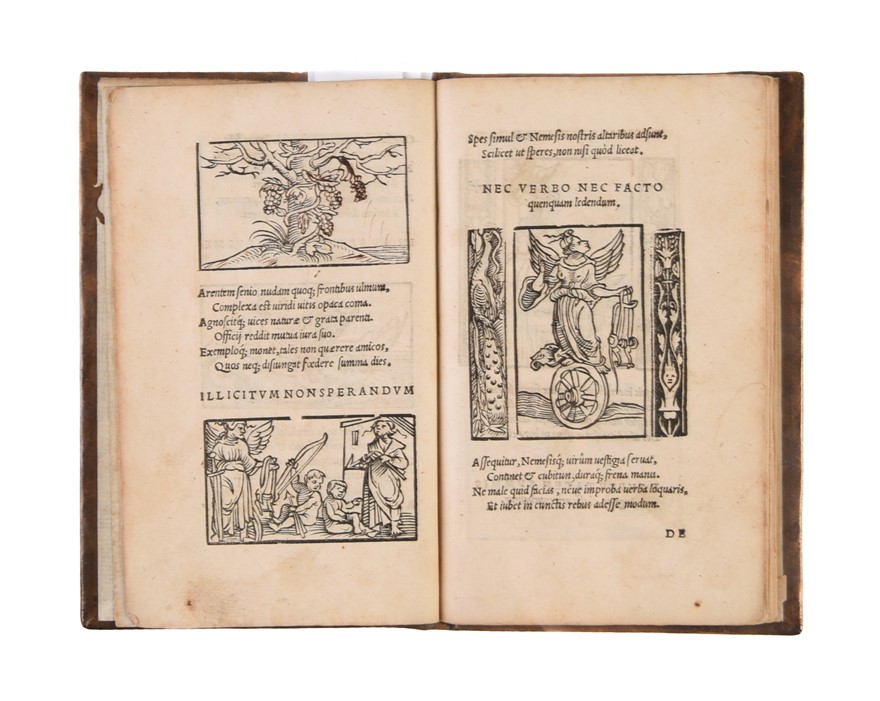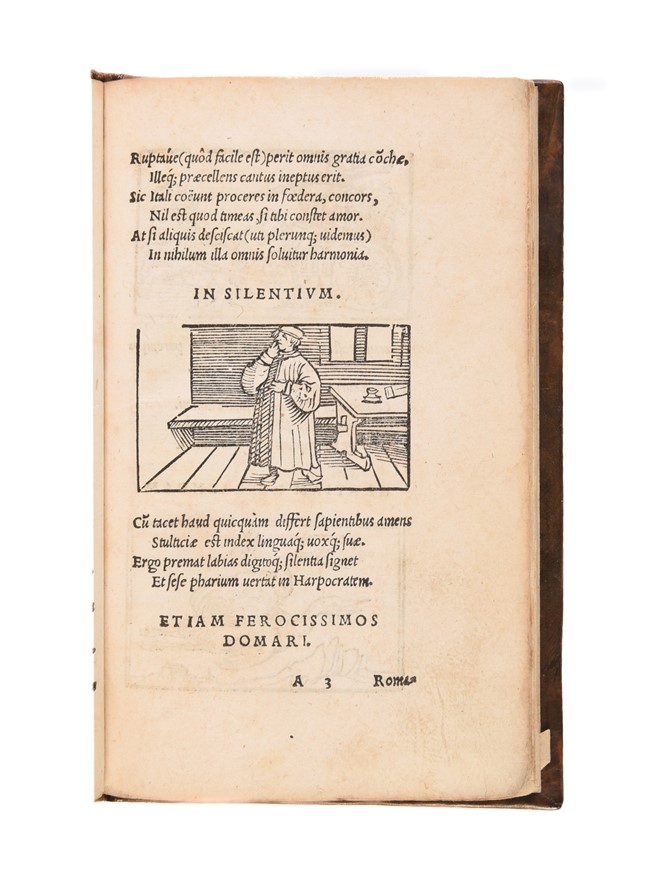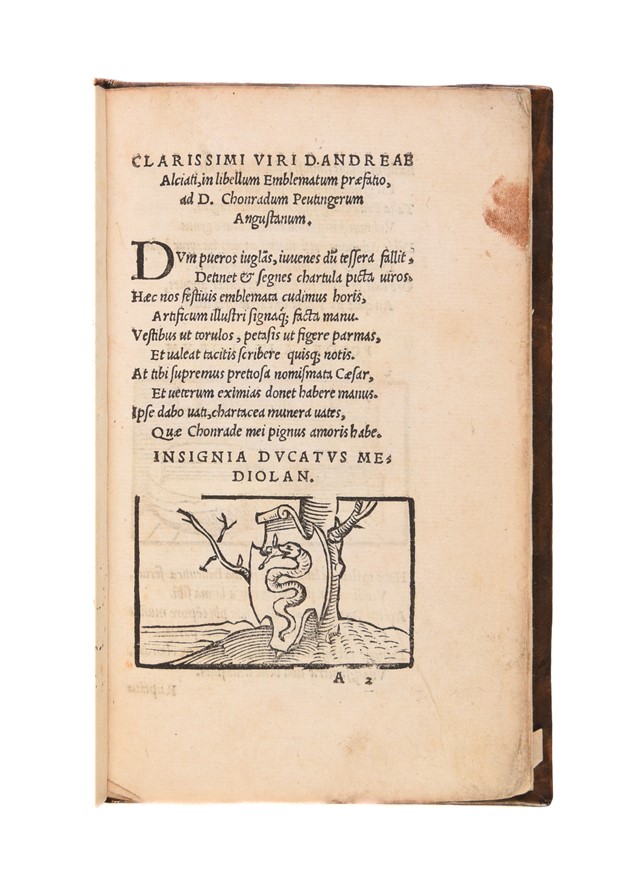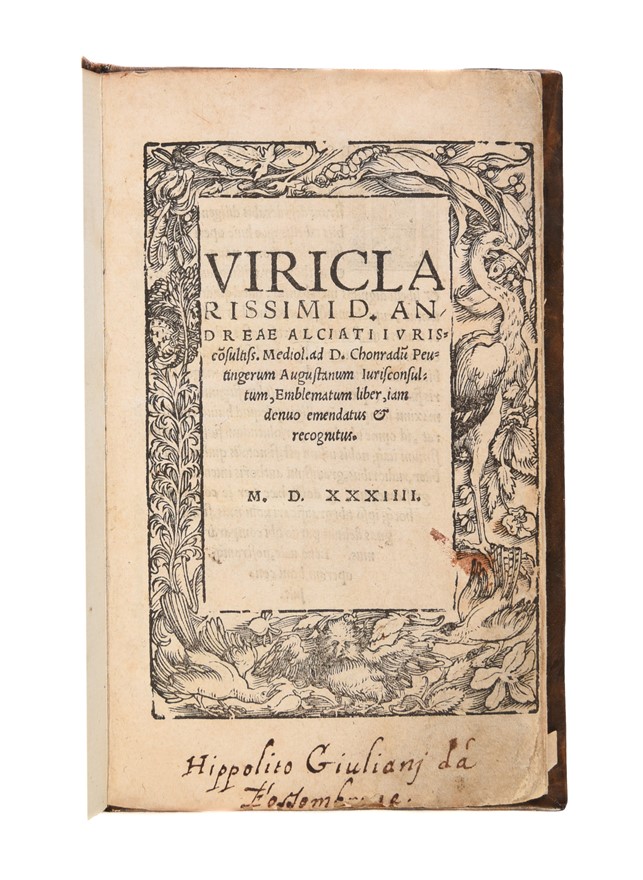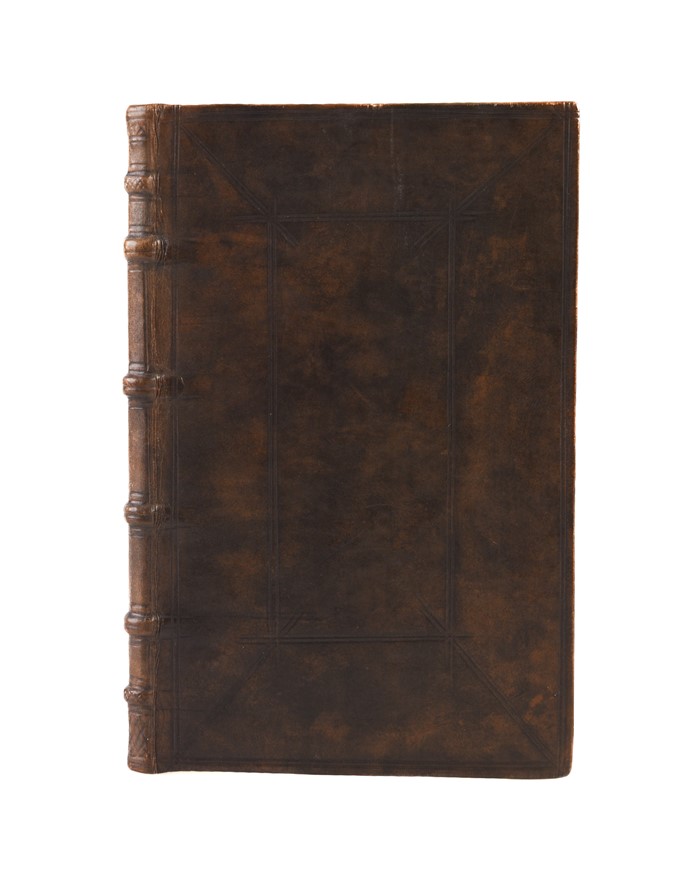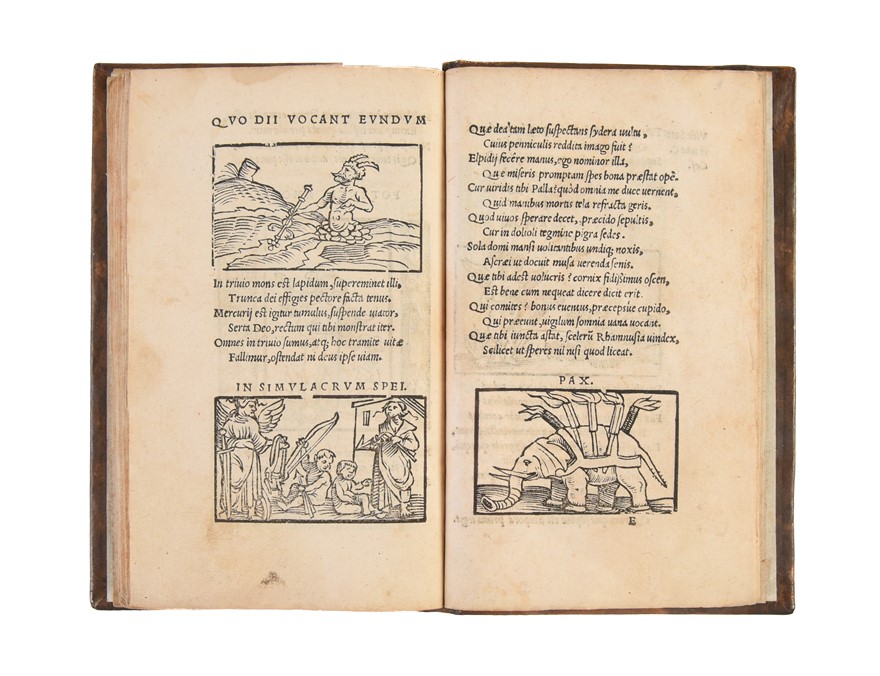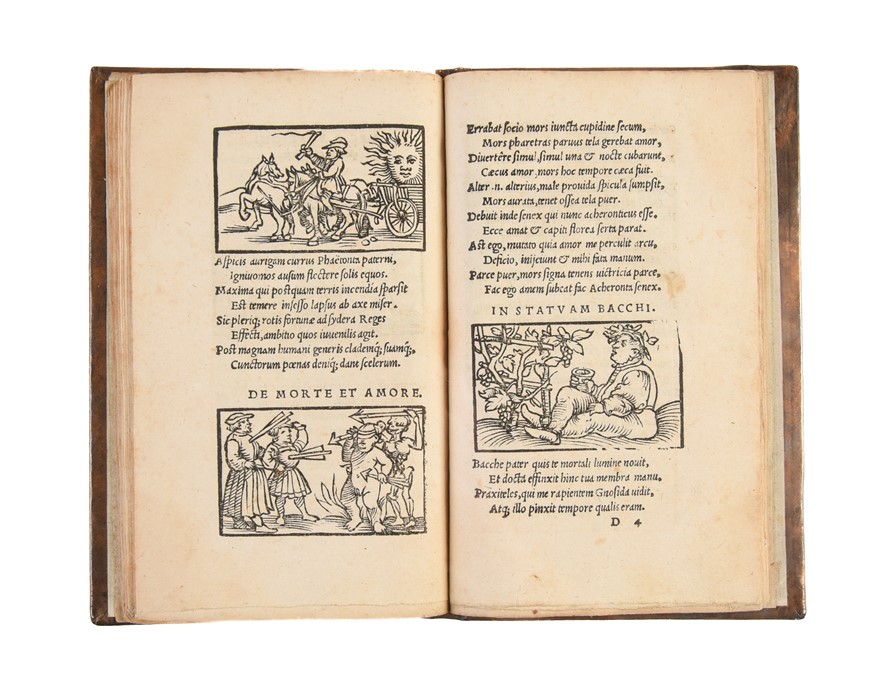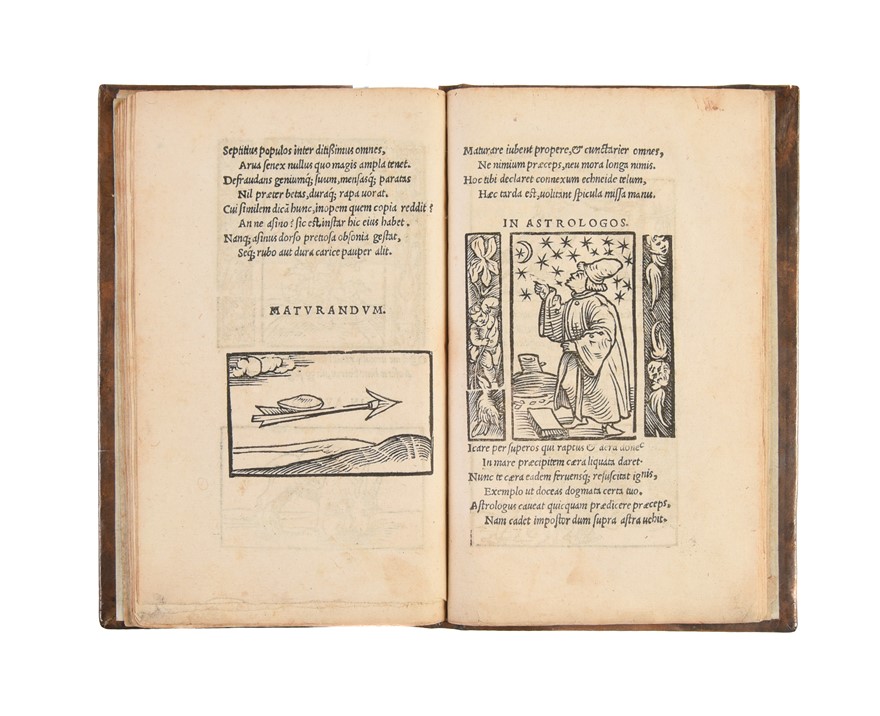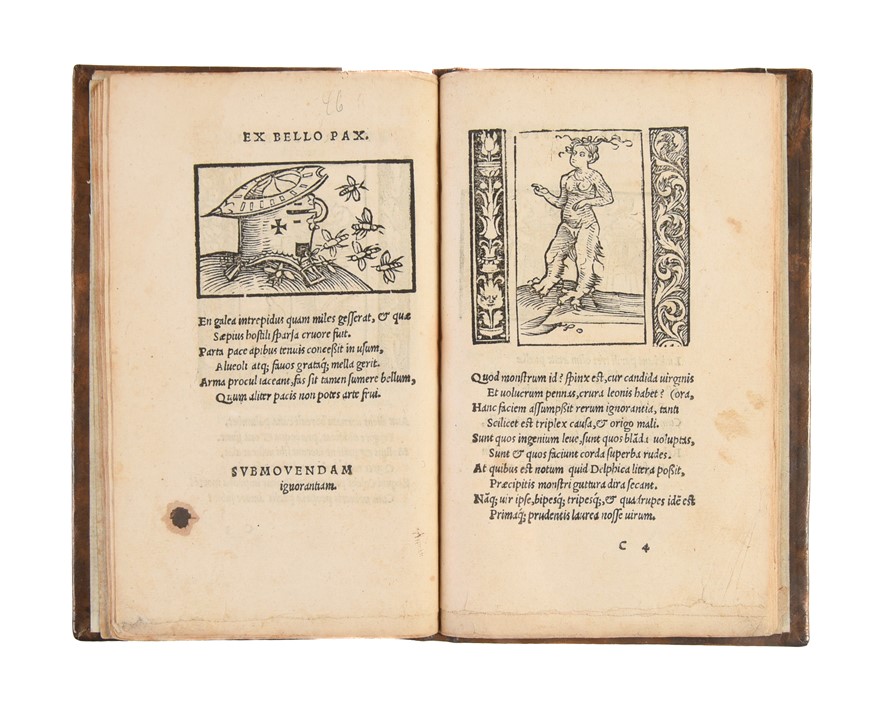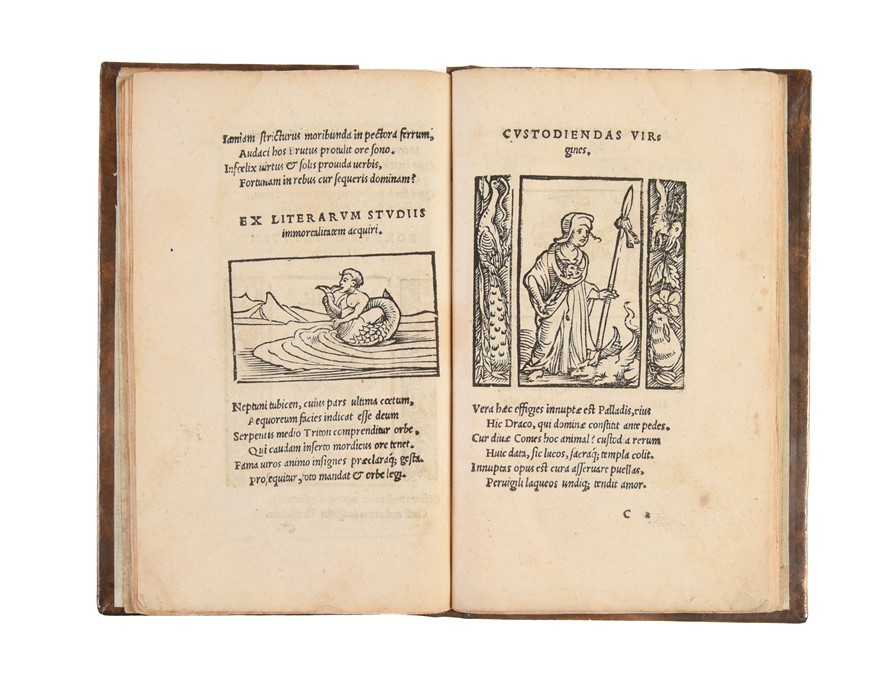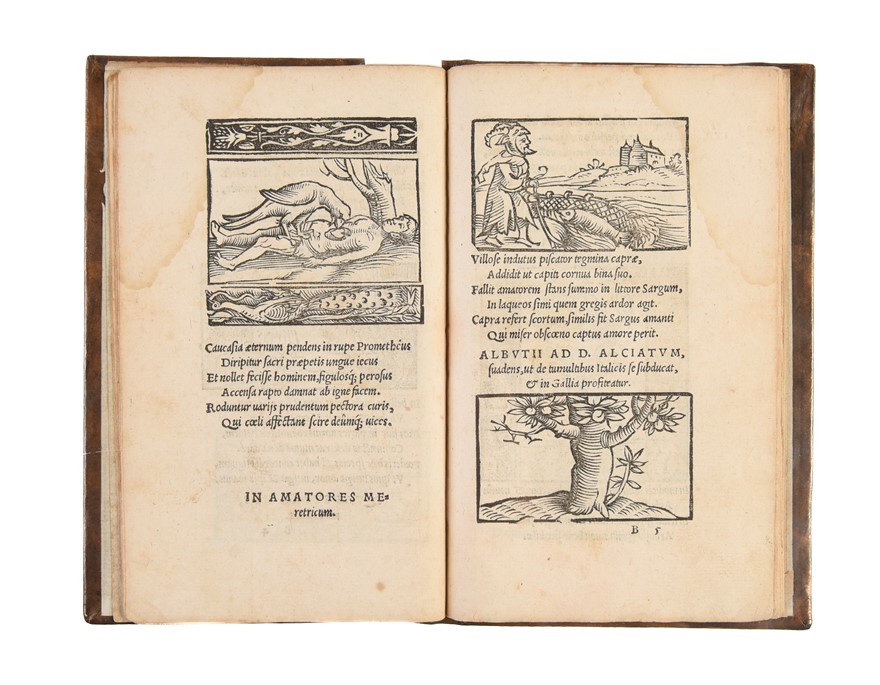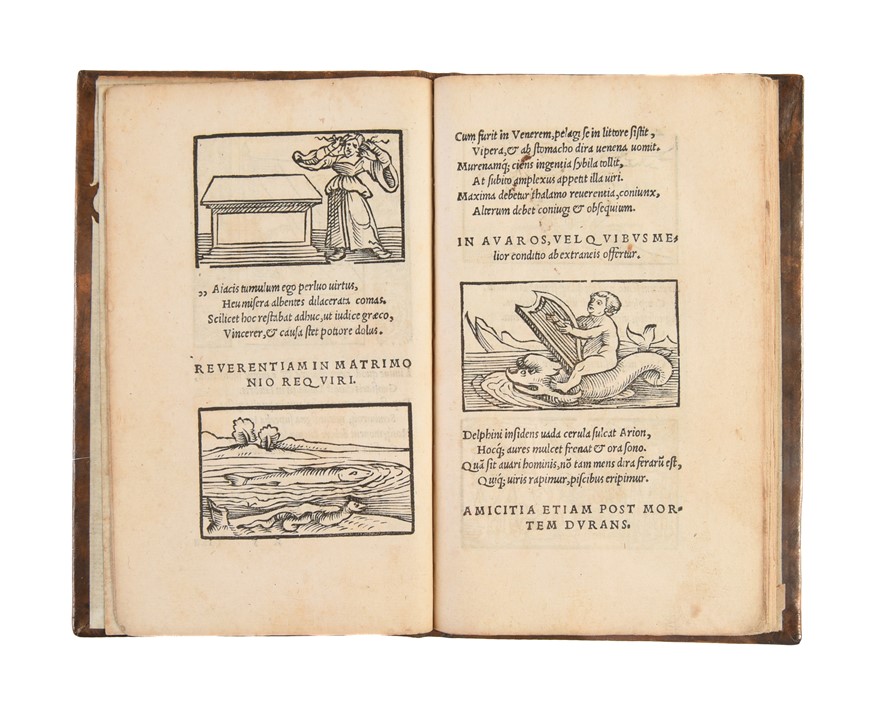Emblematum liber, iam denuo emendatus & recognitus.(Augsburg, Heinrich Steyner, 29 July) 1534
ALCIATI Andrea (1534.)
£25000.00
Please contact us in advance if you would like to view this book at our Curzon Street shop.
"THE EMBLEM'S FIRST GIGANTIC STRIDE TOWARDS A DISTINCTLY POPULAR CULTURE"
Naturalistic one-piece woodcut title-border and 98 (one repeated) small woodcuts after Jörg Breu the Elder; the title border and small border pieces flanking some of the cuts by Hans Weiditz.
Sm 8vo (162 x 102mm). [43] ff (without final blank). Antique-style blind panelled calf over paste boards, spine with raised bands.
An extremely rare survival from the unauthorised Augsburg printings of the first emblem book, illustrated with the original series of woodcuts by Jörg Breu, which launched not only numerous editions of Alciati’s landmark work but also the entire genre of emblem books.
The Augsburg printer Heinrich Steyner first published Alciati’s manuscript, without his permission, in February 1531 and by April had published a second revised edition, this being his third and final edition with further revisions of 1534. Only ten copies have survived in libraries, most are found in Germany, with three in the UK and one in the US.
Steyner’s editions were dedicated to Alciati’s fellow humanist Conrad Peutinger (1465-1547), possessor of a manuscript copy of the text which has been circulating in this form amongst his friends since 1522. The publisher’s key decision, of lasting importance, was to illustrate the text and therefore increase the readership from Alciati’s purely learned circles to a far wider popular one. The woodcuts, which fuelled the subsequent publishing phenomenon, came from the artist and Steyner collaborator, Jörg Breu the Elder (c. 1480-1537). Although simplistic compared to later more elaborate manifestations, in his foreword Steyner himself refers to Breu’s “somewhat crude signs”, they were intended as aids to interpretation and enjoyment. Their influence, however, cannot be overstated as they started the iconographic tradition sustained in the multitude of future editions.
Steyner's innovation did not end there as he also established the early modern emblem’s distinctive tripartite structure, consisting of the lemma, the pictura, and the epigramma – Alciati’s manuscript has not survived but it is generally accepted that it would have held only his epigrams. Within a century over a hundred more editions would be printed, not only in Latin but in French, German, Italian and Spanish, and many of the emblems are found in English in Whitney’s Choice of Emblems (1586).
"Alciato's Emblems appeared for the first time as a distinct work in printed form in 1531... the book appears to be exactly what an emblem book should look like: a collection of poems with mottoes and accompanying woodcuts. Such was the success of Steyner’s inspirational publishing coup that the design he hit on became the most usual form in which a publication of this kind would be issued for the entire history of the genre... This was the emblem’s first gigantic stride towards a distinctly popular culture. And the emblem never fully recovered... For all its faults, from this modest beginning sprang the most frequently reprinted emblem book in history. It appeared in over 200 editions in the 16th and 17th centuries alone, and was almost immediately translated into the vernacular... its repertory of images was appropriated by the material culture and reproduced in tapestry hangings, plasterwork and domestic ornament." (Manning).
Andrea Alciati (1492-1550) was born in Alzate near Milan and is famed not only for his emblems as ‘pater and princeps’ but also as a legal scholar, especially for his interpretative work on Roman law. Following his studies in Milan, Pavia, Bologna and Ferrara, he taught law both in Italy and in France, including a stay in Bourges from 1529-1534 at the invitation of François I. Erasmus held him in great esteem and along with Budé and Zasius, Alciati was regarded as one of the "triumvirate" of humanist jurisprudents.
As noted by Hollstein, "one of the leading figures of Augsburg Renaissance art, Jörg Breu the Elder was also one of the most versatile and productive designers of woodcuts of his day, especially in the field of book illustration." Having been a journeyman in Austria, Bartrum states "In 1502, he returned as a master to Augsburg where he became increasingly under the influence of Hans Burgkmair. His first dated woodcut was made in 1504; nearly 700 woodcuts are listed in Hollstein, made chiefly as illustrations for the leading publishers in Augsburg, particularly Steyner".
Provenance: Contemporary inscription of 'Hippolito Giuliani da Fossomb[ron]e' at foot of title-page.
Title closely trimmed at fore-edge, not affecting border; some dust-soiling and damp staining throughout.
A tall copy with folios B1, C3-6, D3-6, E4-6 untrimmed and a little shorter at lower edge.
VD16 A1643. Landwehr German, 26. Green 6. J. Manning, The Emblem (2002), p. 38ff. New Hollstein Breu (2008), p. 294 and nos 254-350. G. Bartrum, German Renaissance Prints 1490-1550 (1995), p. 153.
OCLC/USTC UK: Oxford, Glasgow, JRL Manchester. USA: NYPL only. Rare Book Hub lists the last auction copies as sold at Sotheby's London in 1946 and 1918.
Stock Code: 249869
